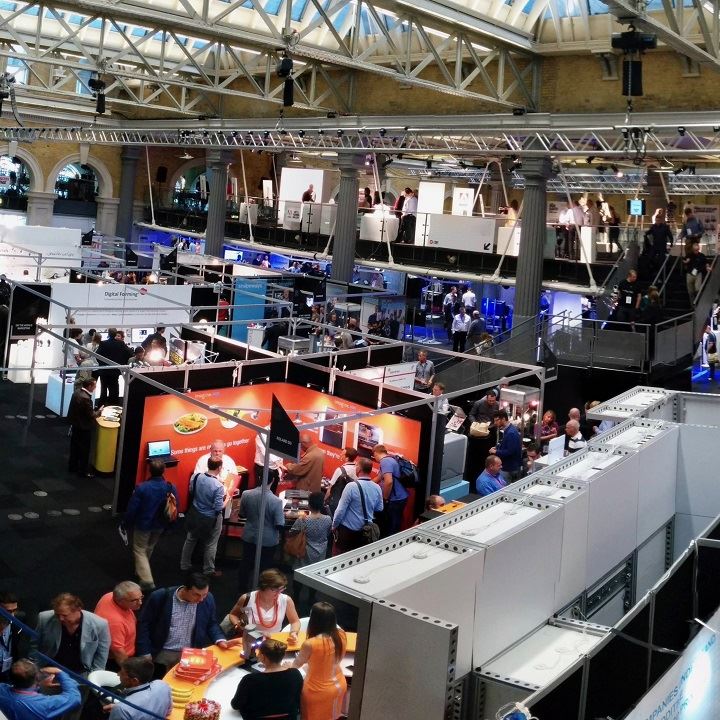![An overview of the industry — bird’s eye view of a 3D printing event [Image: Julie Reece]](https://fabbaloo.com/wp-content/uploads/2020/05/juliereeceview_img_5eb090fe52e89.jpg) An overview of the industry — bird’s eye view of a 3D printing event [Image: Julie Reece]
An overview of the industry — bird’s eye view of a 3D printing event [Image: Julie Reece]
There is enough information on this topic to fill a book, so I will offer some perspective based on my own experience in the industry.
I joined the 3D printing industry in 2008, in the marketing department at Z Corporation. 3D printing is an entirely different industry now than it was in 2008. When I entered the industry, there were only a few OEMs, each with distinct value propositions. This made it relatively easy for users to determine which 3D printers would best suit their needs. ‘Additive Manufacturing,’ as we know it today, did not exist and material choices were extremely limited. The application focus then was ‘Rapid Prototyping’ for commercial applications, rather than building parts for production and end-use industrial applications.
Fast forward to 2019. Prospective buyers frequently tell me they feel the industry is overwhelming. Today, there are about 177 manufacturers of professional additive manufacturing and 3D printing systems ranging in price from around $5K to millions of dollars. Many systems are essentially different flavors of existing systems. Material options have expanded, especially for production applications, with composites, elastomers and metals. And, hype about the capabilities of certain printers has caused confusion for buyers, unmet expectations and general skepticism about additive manufacturing systems.
Industry Momentum
That said, it’s an exciting time for the industry. Additive manufacturing continues to grow quickly, and innovators are pushing the bounds of what we only dreamed possible in the early days of the industry. Consider the strides that have been made in 3D printing for healthcare with applications like 3D printed implants and organs.
My own experience underscores the dramatic change. At Z Corporation, I secured a PR placement for a National Geographic TV program called Known Universe. The premise of the segment was, imagine if astronauts could scan a tool and print replacements on demand in space, which we demonstrated on video in our office. The idea was so far-fetched to the general public at the time, that the video, known as the “wrench video,” went viral with nearly 9 million views. That was the first time 3D printing was exposed in a significant way to the public in mainstream news and other outlets, despite having been in use commercially for several years. Today, that seemingly far-fetched application is a reality on the International Space Station.
Looking Ahead To More Change
An area of 3D printing that has not changed substantially, but seems to be in the early stages of doing so, is the percentage of women in the industry and more importantly, their experiences.
A recent report on Diversity for Additive Manufacturing, authored by Sarah Goehrke for Women in 3D Printing, highlighted findings that only 11% of the 3D printing industry is comprised of women. A study from Alexander Daniels Global found that most of these women are in marketing, sales and consulting roles. Sound familiar?
Numbers alone don’t tell the whole story. Let’s talk about experiences.
As a woman in 3D printing, I have been compensated far lower than men of equal position. I have been excluded from relevant meetings that included only men who shared my designation as a company leader. I have routinely been directed to be a note taker during meetings and perform other tasks typically assigned to an executive assistant, despite being in a leadership role and far busier than male colleagues at junior levels, including interns. I have had my business proposals immediately dismissed that were deemed worthy when proposed almost verbatim minutes later by male colleagues. These are only a few examples. And, there’s more.
Ageism also exists in the 3D printing industry. There are 3D printing companies commonly known to only hire employees under the age of 35. I have heard, “Let’s hire someone young and fresh.” Are we incapable of fresh ideas because we are, ahem, ‘mature?’ Let me answer that question for you with a resounding, “No!” Yet, employees older than millennials are feeling increasingly invisible and unwanted in the workplace; I have heard this many times in conversations with former colleagues.
I, and many of my contemporaries who are on the younger end of the baby boomer category, began my career during a deep recession. If we were lucky enough to land a job, we started at the bottom rung of the ladder and were paid very poorly – something that has followed us throughout our careers. We worked hard for and appreciated everything we achieved. That has shaped the type of admirable employees we have become. Despite my chronological age, I have the energy and creativity of someone in her 30s. I regularly and passionately work 16-hour days, weekends and during vacations, always exceeding the expectations of my position. I have kept up with technology trends and innovations in my field. I am not a dinosaur and, more importantly, I am not alone in this regard.
Diversity in the workplace must include diversity of age. “Mature” employees offer an invaluable wealth of knowledge and experience in our fields and we make stellar employees. We should not be ignored or devalued.
The 3D printing industry is hardly recognizable from a technology and innovation standpoint compared to 2008. However, the fact that we haven’t made equal strides in diversity of gender, age and other demographic characteristics, is concerning. We can and must do better. Companies with diverse teams will generate greater diversity of thought compared to companies with homogeneous workforces, and diversity of thought leads to greater innovation.

